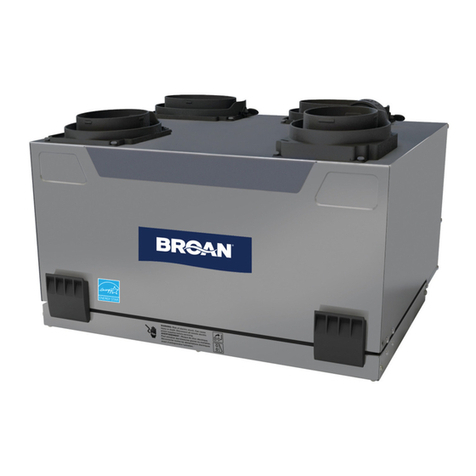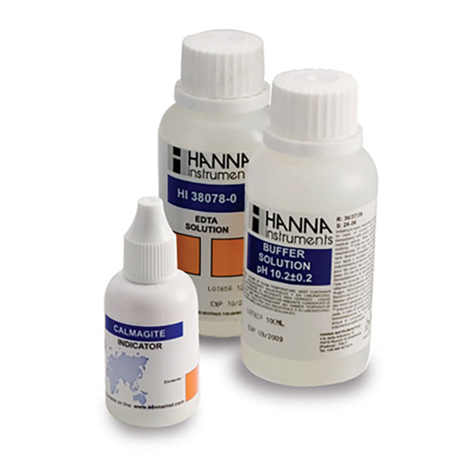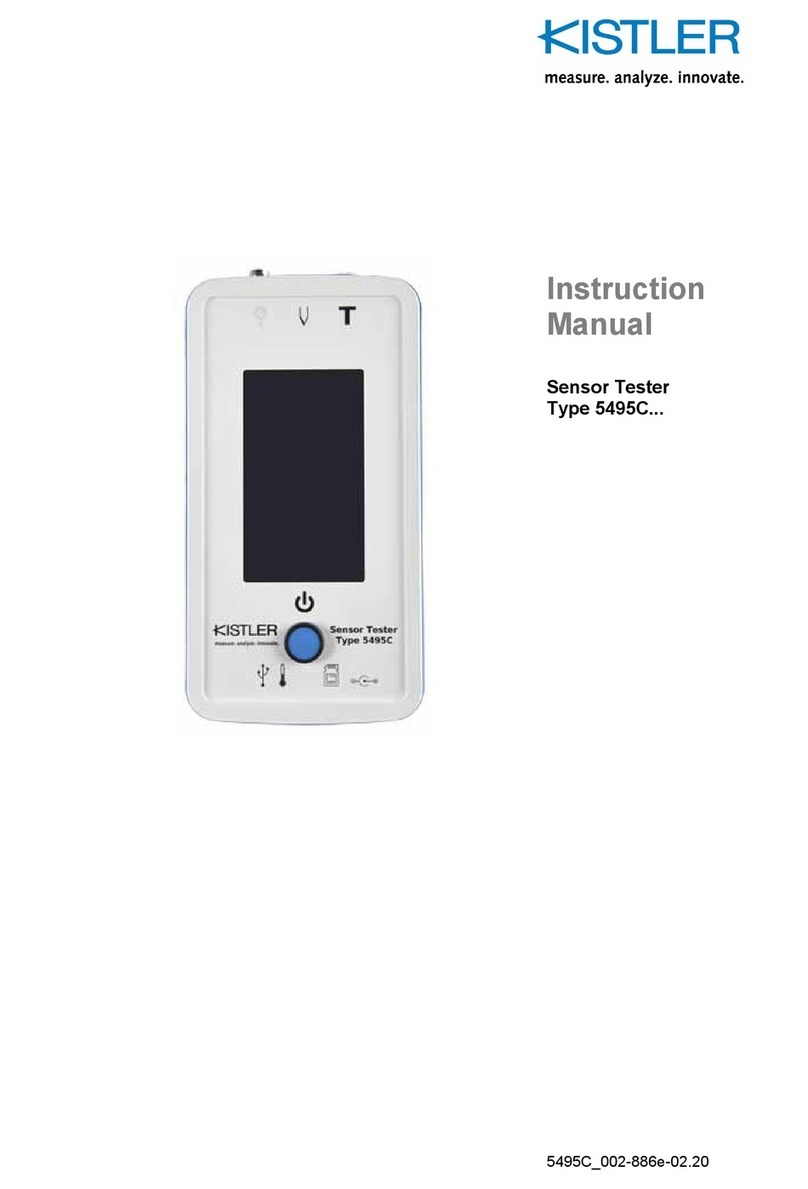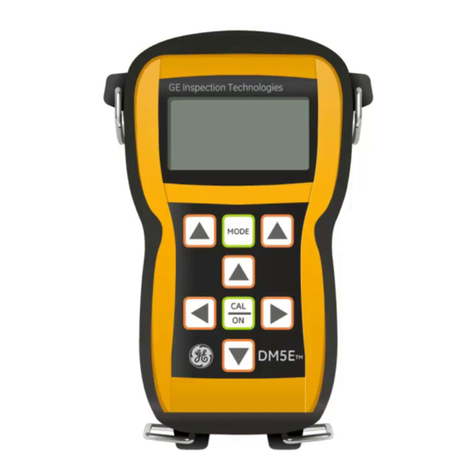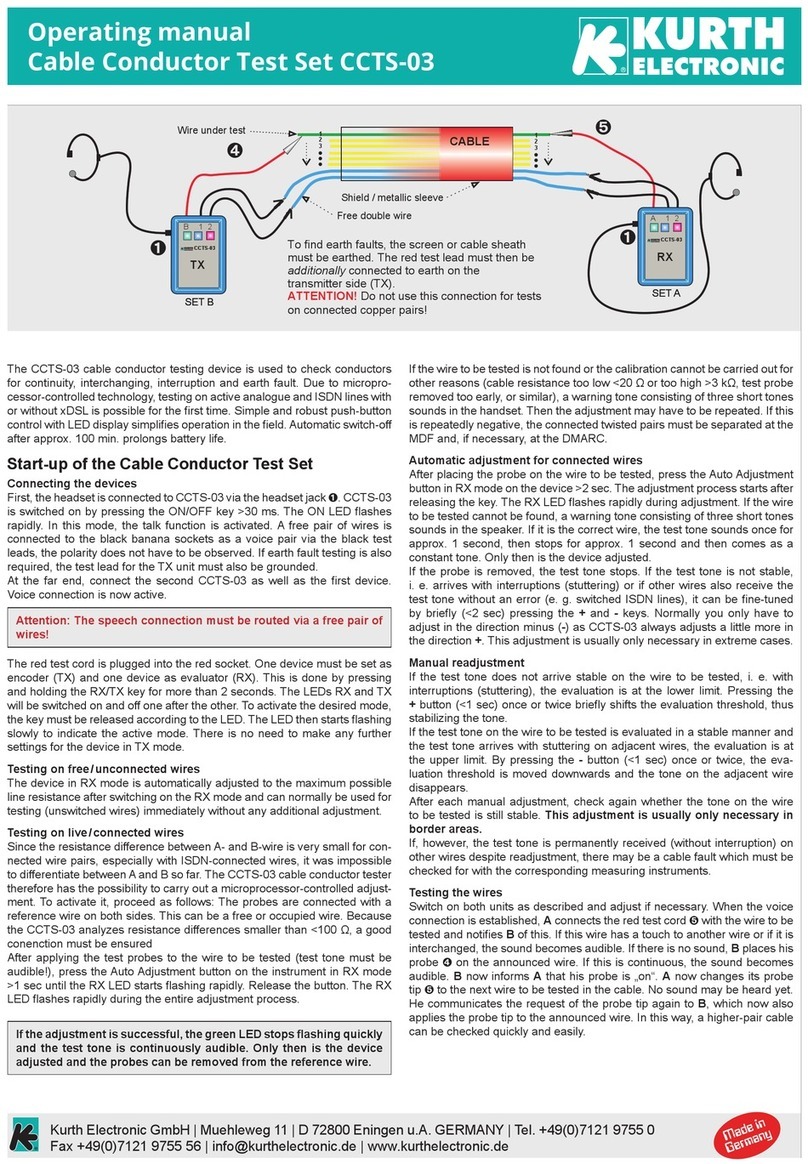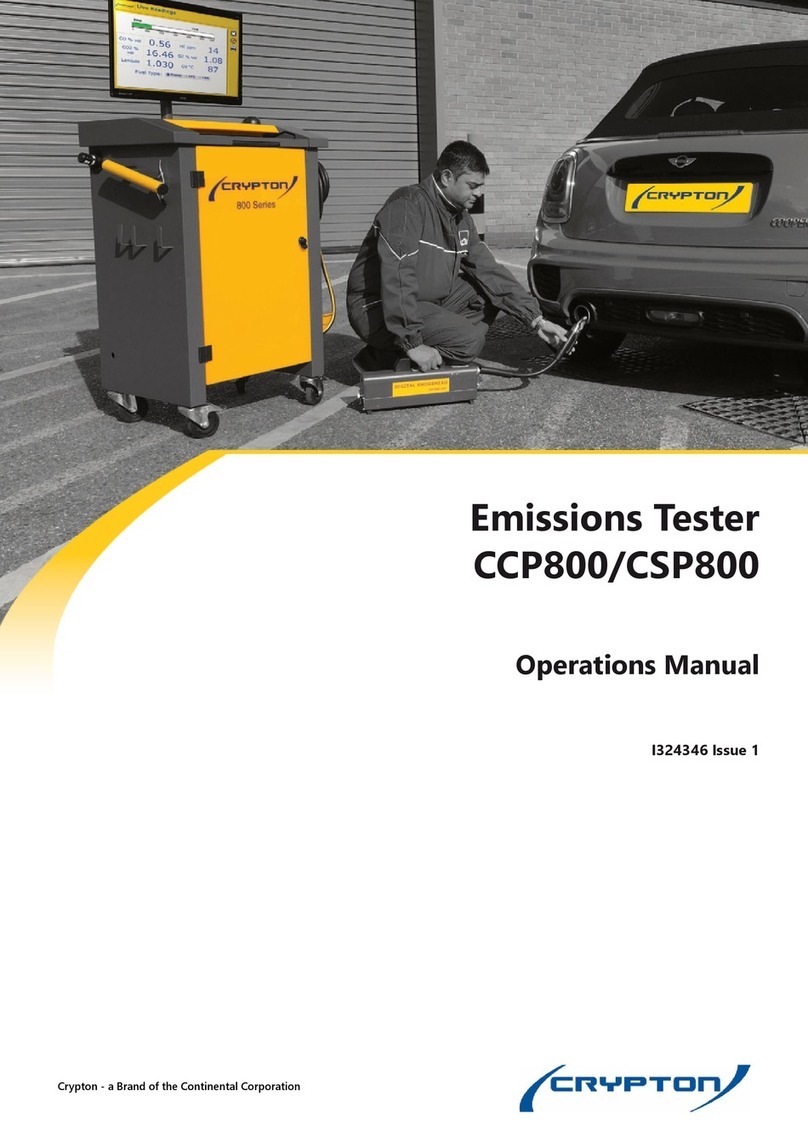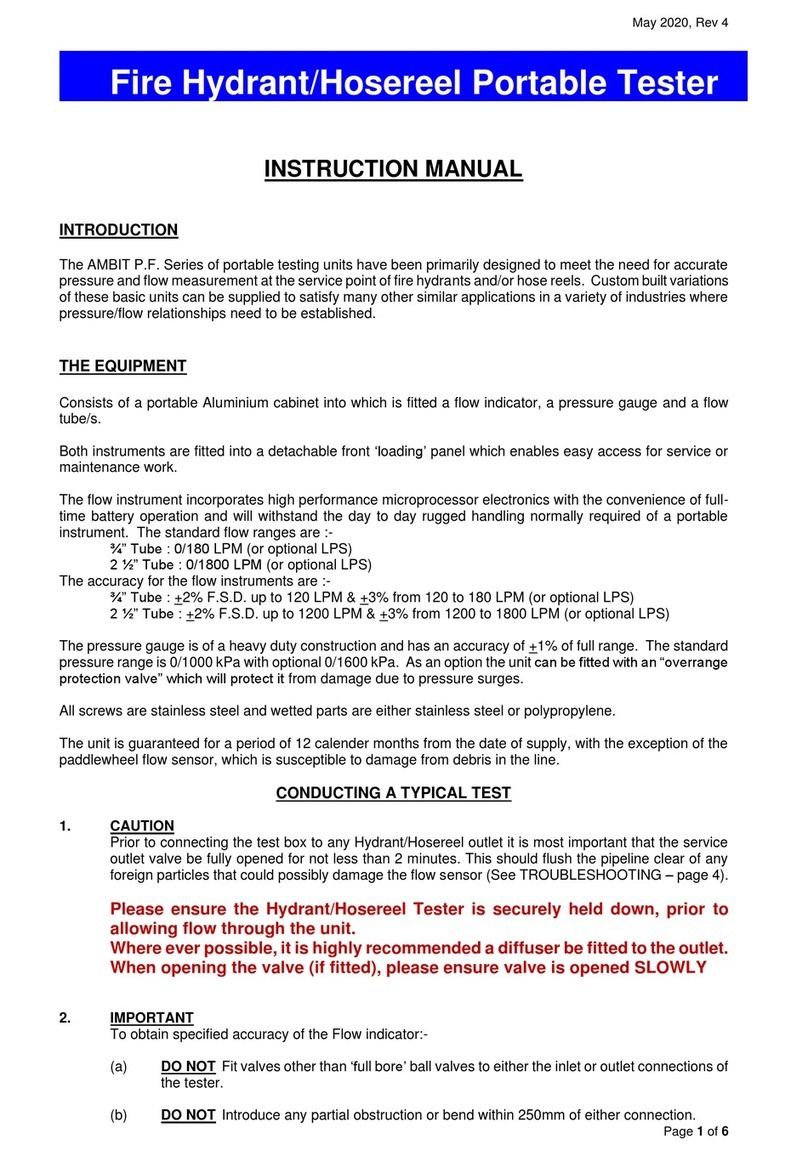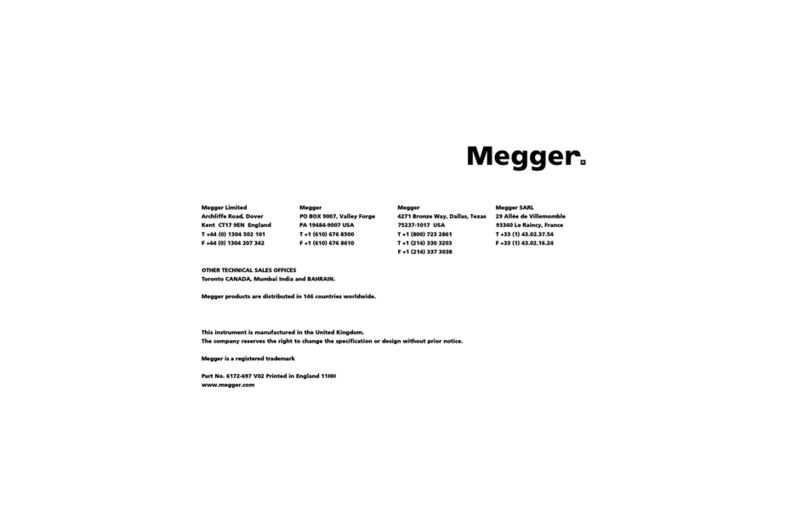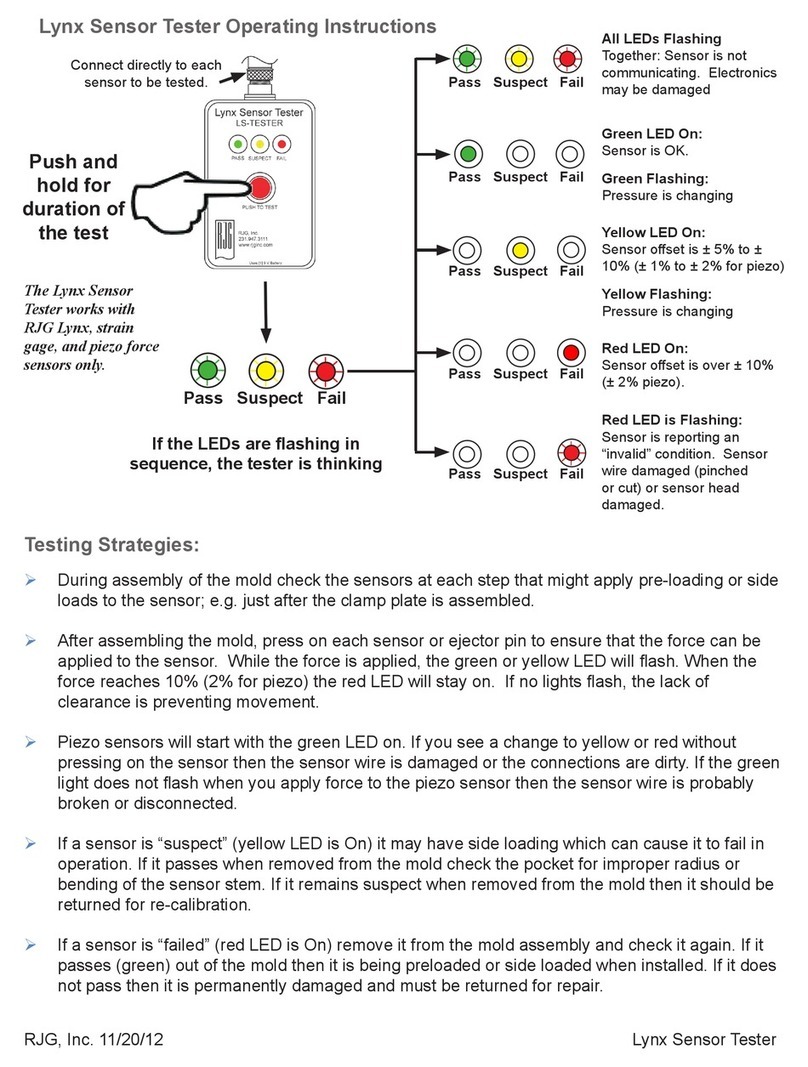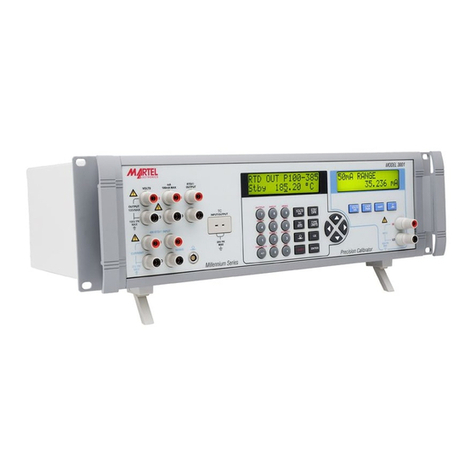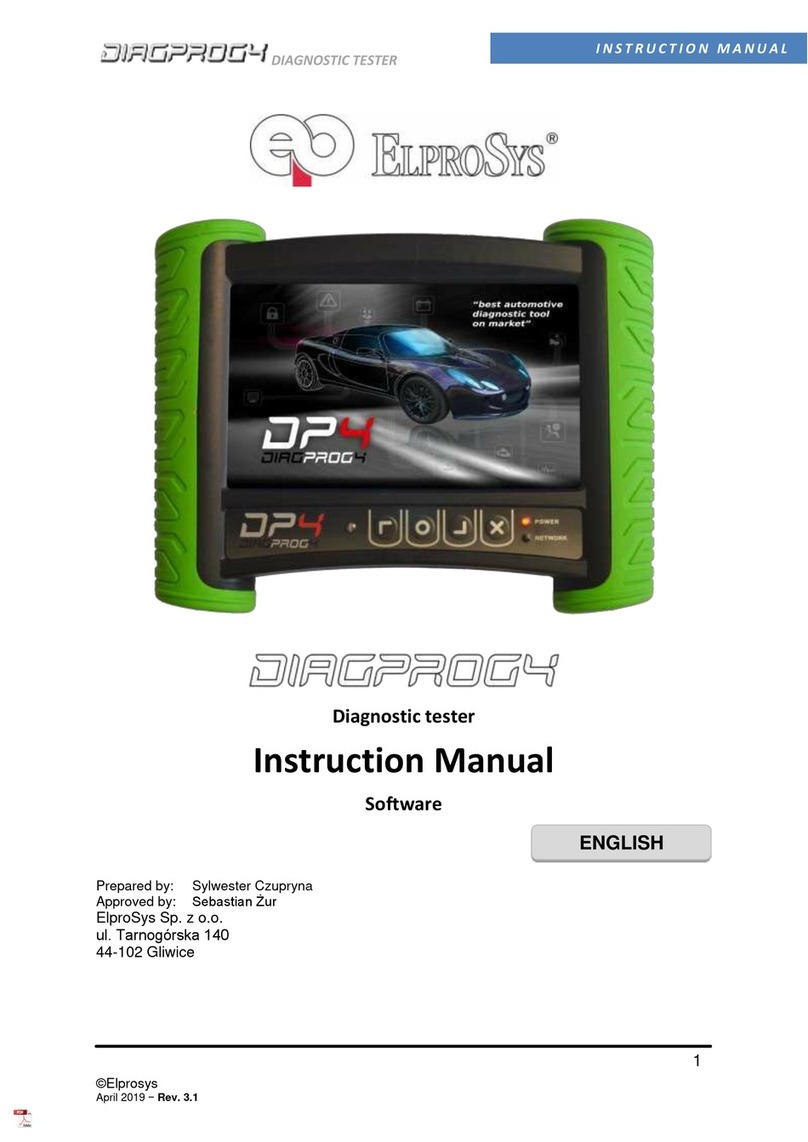
2.8 Priority stop devices
The bench is itted ith several priorities stop
devices:
›The "ESC" key on the software key oard,
›The red "ESC" utton on the remote control. We
recommend that the operator in charge of ongoing
tests has an operational remote control (regularly
check the state of the attery) as this is a remote
priority stop device. Warning: the remote control
infrared eam is directional.
›Note: the "ESC" key on the remote control is
permanently operational, even if the test operations
are conducted from the console.
2.9 Emergency stop devices
The bench is equipped ith an emergency stop
device:
›The main power switch on the side of the console
completely cuts the single and three phase power
supplies to the console.
2.10 Precautions for vehicles
checked on the brake tester
›Check the cleanliness of the tyre treads, wash o
mud that could alter measurement quality y
reducing adherence, and remove any o jects jammed
in the treads that could damage the roller surface
coating.
›After eventual cleaning look for traces of aggression
or cuts on the tyre treads; the force exerted y the
rollers on the ru er during the test can worsen
existing damage and rip o pre-cut pieces of ru er.
Only place vehicles on the ench of which the weight
and size are compliant with the Highway Code and/or
the maximum speciications of the type of installed
test ench (see user manual, general presentation
section).
If a vehicle eing tested is driven y an untrained
person (the vehicle's owner for example), it is
mandatory to carry out the operations under the
control of an authorised operator who will give the
driver all the necessary instructions to prevent
incorrect operations.
The maximum vehicle speed during use (entering and
leaving the ench) is limited to 10 km/h.
2.11 Servicing, maintenance,
veriication or repair ork
Special case of metrology checks:
›When carrying out metrology checks, which require
the equipment to e powered on, it is imperative that
no one other than the technician carrying out the
check can access the controls or work on the ench.
›During work on the equipment, access to the work
zone is prohi ited to all persons other than the
technician carrying out the work.
2.12 Recycling
The materials from the destruction of this equipment
must e eliminated in compliance with the applica le
regulations in the country of installation:
›Collect the oil and dispose of it in a specialised
facility,
›Remove the electric and/or electronic parts,
›Dispose of the rest as scrap metal and deliver it to
specialised collection points.
2.13 Fire prevention
The equipment as such cannot in principle cause a
ire. However, the premises must meet ire prevention
standards in compliance with regulations applica le at
the location the equipment is installed.
The vehicle eing tested can e the cause of a ire
(accidental petrol leak, petrol fumes, sparks or other
causes). For these situations, it is recommended to
always have a ire protection device (extinguisher) to
hand (in the area reserved for the operator) in order to
immediately eliminate any danger that may arise.
Warning: efore testing a vehicle on the rake
testing ench it is imperative to:
Before carrying out any work on the equipment it
is imperative to power it o.
Any work other than the servicing descri ed in
these instructions can only e carried out y
persons qualiied persons.
After the enches, have een serviced or cleaned,
reit all protection equipment that may have een
removed.
Operating Manual RBT240 / RBT270 Operating Manual RBT240 / RBT270
12 13
2.5 Handling and installation
instructions
Remem er that during all loading, unloading,
handling, installation, assem ly or dismantling
operations on the equipment the operators must take
all necessary precautions under workplace accident
prevention rules (hard hat, gloves, safety footwear, etc.)
as deined y applica le country speciic regulations.
Packaged equipment must e handled using
equipment suita le for lifting and moving pallets.
Unpacked equipment must e handled and installed
y trained qualiied engineers.
The chassis is itted with lifting rings and are delivered
on pallets. Their installation over an inspection pit
must e carried out using a sling with chains attached
to the 4 lifting rings screwed onto each chassis. Once
installed over an inspection pit they are completely
em edded and cannot e moved.
2.6 Instructions for the electric
installation
Remark: The wiring diagrams required to service the
equipment are not supplied ecause these servicing
and repair operations should only e carried out y
qualiied sta. These persons have all the required
documentation.
General case: 230/400 V 50Hz electricity supply:
To connect the consoles and repeater screen
(optional) install a single phase 230 volts 10% 50 Hz, 16
A electricity supply + Ground itted with a protection
compliant with applica le regulations.
›To connect the electric motors, install a 3 phase, 400
volts, 50 Hz (30 A for light vehicles) + Ground itted
with a protection compliant with applica le
regulations.
For any other power supply voltage: the speciications
of the electricity lines and protection to e installed are
deined on the layout drawings. Any electricity supply
dierent from that descri ed a ove must e notiied
when ordering the equipment.
›Fix the electric ox over the ca le input opening. An
unixed console can cause the electric wiring to e
damaged and create an electrocution hazard.
›It is mandatory to pass electricity supply ca les
through the uried sheaths recommended on the
layout drawings and they should e protected from
any risk of eing damaged (such as eing crushed, cut
or ripped out).
›The em edded electric ducts for the consoles must
arrive in the ducts over which the consoles are placed
so that no ca les are apparent from the outside.
›The ca les must e protected and the inspection pit
cleaned if liquid (water, oil, fuel, etc.) leaks from a
vehicle and comes into contact with the ca les.
›If the inspection pit has no water drainage (for
example due to water ta le issues), in wet or snowy
weather take the required precautions to prevent
water or snow from running or falling o vehicles into
the test enches. In the event of heavy rain, prevent
the enches from eing looded. Do not allow an
inspection pit to ill.
›Special case of low voltage ca les for measurement
circuits, printer and computer connections, etc.
–These ca les must e installed in ca le
raceways separate from the power ca les.
–The measurement ca le sheaths must e more
than 0.5 m from the power supply ca les for other
machines as these can e the cause of parasites:
compressors, motors of several HP, arc welding
equipment, etc.
–Avoid having a magnetic ield close to the
console and the magnetic readers (diskettes, hard
drives, etc.) as this could damage data or the
application programme.
–Similarly, a very high voltage power line less
than 50 m from the premises or a high-power radio
emitter could possi ly disrupt the computers or the
measurement equipment.
2.7 Other precautions and
instructions to follo
Use of the remote control:
›In order to guarantee the correct operation of the
remote control, all infrared sources other than those
from Continental equipment must e avoided (such as
alarms, vehicle remote controls, etc.), as must all neon’s
at less than 2.5 m from the infrared sensors.
Computer risk prevention, precautionary rules and
handling rules:
The supplied computer equipment has een
conigured for professional use.
It is prohibited:
›To shut down the PC using the console power
switch, the PC must e shut down using the descri ed
programme shut down procedure.
›To modify the BIOS.
›To add components to the PC such as RAM, cards
etc. …
›To change Windows coniguration settings,
›To install software that is not supplied y Continental,
›To connect remova le media such as USB lash
memory, unless speciically instructed to do so y
Continental product support.
Console protection
›Protect the console and the printer from any water,
oil or other liquid spray as well as from any dust-laden
atmospheres. If necessary, use a protective cover
when the appliance is not in use.
›Protect the console and its components from
heating due to direct exposure to heat sources
(sunlight, radiant heating, etc.)

